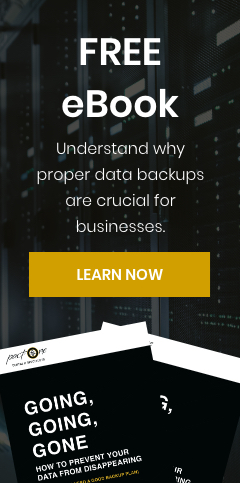Ransomware continues to be the most dangerous type of malware, with one in five businesses in the United States falling victim to an attack. For those who don’t know, ransomware is designed to block one’s access to a computer system until a specific sum of money is paid. These threats cost business owners anywhere between $1.16 million and $2.34 million — a range that continues to grow every year.
With confidential client data at stake, robust measures are necessary to protect your dental practice from increasing ransomware attacks in 2021. Here are a few tips your dental practice needs to do to stay safe against ransomware:
Secure your network
First, you need to strengthen your network security. Next-generation firewalls are an essential tool for blocking access to known dangerous websites as well as assessing incoming network traffic for malicious activity. They also help control user access by whitelisting specific IP addresses and restricting network entry to VPN users.
Additionally, dividing your network into smaller, isolated segments that function independently of each other can prevent ransomware from spreading laterally across your entire network. Damage is restricted to the specific segment affected, minimizing impact on your dental practice’s systems.
Filter your emails
Phishing emails are a popular method of distributing ransomware attacks. These fraudulent emails are often disguised to come from legitimate companies to deceive recipients into clicking on a ransomware-laced link or attachment.
To reduce the risk of ransomware in your inbox, implementing email filtering software is a must. Not only does it help in automatically blocking spam or suspicious messages, but advanced solutions can also scan your emails for potential phishing attempts, such as harmful attachments or spoofed domains. Some may even offer “sandboxing,” in which suspicious links are tested and properly analyzed in a virtual environment before allowing network access.
Install and update anti-malware software
Anti-malware software plays a crucial role in ensuring thorough network and user protection. Such software not only protects data from potential ransomware attempts, but also a broad range of other malicious programs, including keyloggers, worms, Trojan horses, adware, and spyware.
Once installed, anti-malware programs regularly scan your devices for harmful files or suspicious activity. Built with a regularly updated database of known viruses and malware, anti-malware software checks for any program matches among your data and either alerts you to their presence or removes them immediately.
Have an effective backup and recovery process
Regular data backups are critical to an effective disaster recovery plan, as they provide (and maintain) a secure archive of your important information. Some solutions may even allow you to automate this process, enabling you to schedule backups as well as identify the type of data that gets backed up. In case of a ransomware attack, data backups allow your dental practice to restore systems and files back to a point before they were compromised, and resume your operations as if nothing ever happened.
Of course, protecting your data backups is also crucial. That’s why your backup servers must be stored in highly guarded facilities with strong physical security, stringent access controls, and advanced threat protection systems.
Train your staff in best practices
It’s not enough to have state-of-the-art security measures in place. To reduce the risk of ransomware attacks, both you and your employees must also be trained in cybersecurity best practices.
This includes proper password hygiene, the ability to identify phishing scams, avoiding unsecured websites, and the awareness of common cybercrimes and attack methods. Some dental practices may even simulate phishing and ransomware attacks to keep employees on their toes and up to date with the latest cybercrime tactics.
Anticipate risks and plan for the worst
Though preemptive security measures are highly effective in reducing the risk of ransomware, your practice still has a chance of falling victim regardless. Having a thorough incident response plan provides you and your workers with effective guidelines to properly navigate the event of a data breach, which could include procedures to isolate devices, recover lost data, and extract ransomware using anti-malware software. An investigative stage must also take place, to help you assess the root of the data breach and any software updates, security improvements, or further employee training required.
Protecting your data from ransomware shouldn’t be an isolated effort. At Pact-One Solutions, we offer a multilayered approach to achieving thorough network security, helping you keep ransomware attacks at bay. Our experts also provide additional network management and support to ensure regular IT maintenance as you focus on delivering better patient care. Leave the heavy lifting to us — get in touch today.
Dental IT. Remove the Burden. Embrace the Use.
Quality patient care – it's ultimately why you became a dental professional. But, some business operations can get in the way (such as pesky computer issues or lack of IT support). That’s where Pact-One Solutions can help! Our passion lies in supplying reliable, responsive dental IT support and security that practices can count on.
Whether you’re looking for dental IT services for your startup or searching for more responsive dental IT support – our team of dental IT specialists have you covered. With team members throughout the United States, we offer nationwide support to dental practices of all sizes. Our wide range of dental IT services ensure your data is secure, accessible, and protected.
Don't let technology challenges hinder your ability to deliver exceptional dental care. Contact us at info@pact-one.com or 866-722-8663 to join 350+ dental practices thriving with the support of a dedicated dental IT team.


